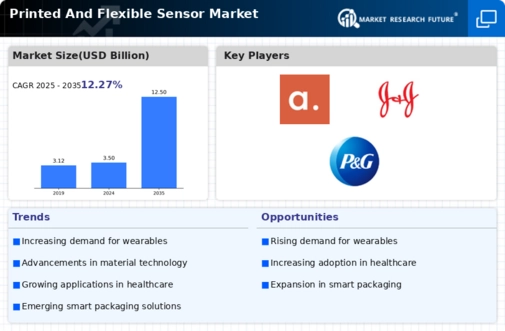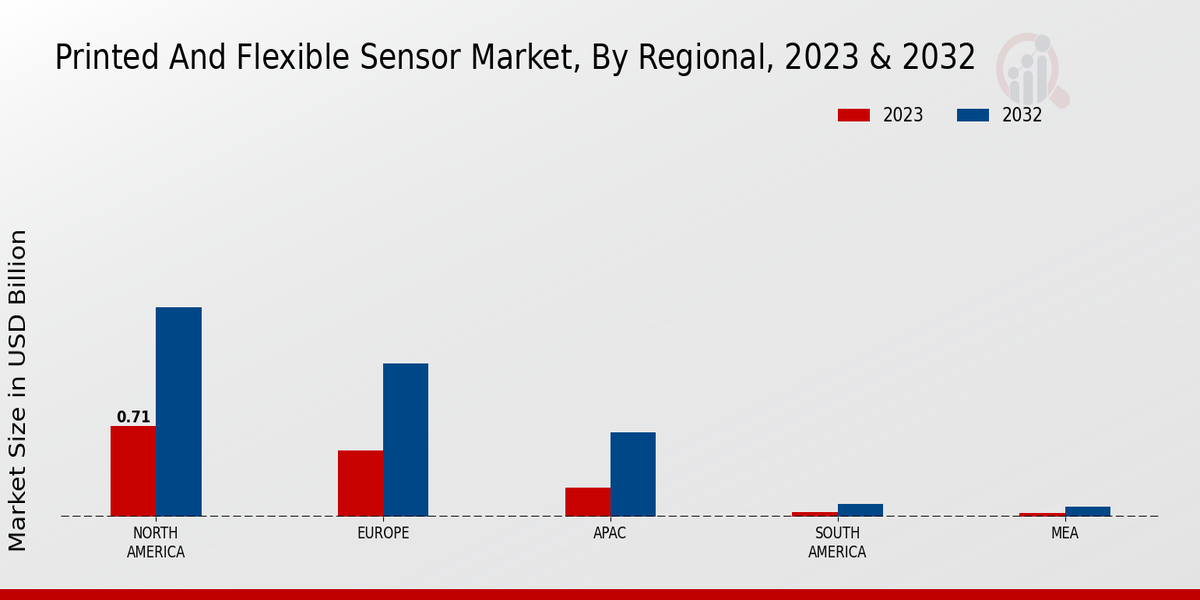Market Growth Projections
The Global Printed And Flexible Sensor Market Industry is projected to experience substantial growth over the next decade. With an anticipated market value of 3.5 USD Billion in 2024, the industry is set to expand significantly, reaching an estimated 12.5 USD Billion by 2035. This growth reflects a compound annual growth rate (CAGR) of 12.27% from 2025 to 2035, driven by advancements in technology, increasing applications across various sectors, and rising consumer demand for innovative solutions. The market's trajectory suggests a robust future, with numerous opportunities for stakeholders.
Advancements in Sensor Technology
Technological advancements in printed and flexible sensors significantly influence the Global Printed And Flexible Sensor Market Industry. Innovations such as improved sensitivity, flexibility, and integration capabilities allow for the development of more sophisticated applications across various sectors, including healthcare, automotive, and consumer electronics. These advancements not only enhance performance but also reduce production costs, making sensors more accessible. As a result, the market is expected to grow substantially, with projections indicating a value of 12.5 USD Billion by 2035, reflecting a robust CAGR of 12.27% from 2025 to 2035.
Growing Demand for Wearable Technology
The Global Printed And Flexible Sensor Market Industry experiences a surge in demand driven by the increasing popularity of wearable technology. Devices such as smartwatches and fitness trackers utilize printed and flexible sensors to monitor health metrics like heart rate and activity levels. As consumers become more health-conscious, the market for these devices expands, contributing to the projected market value of 3.5 USD Billion in 2024. This trend indicates a shift towards integrating advanced sensor technology in everyday wearables, enhancing user experience and functionality.
Environmental Sustainability Initiatives
Environmental sustainability initiatives are becoming a key driver for the Global Printed And Flexible Sensor Market Industry. As industries strive to reduce their carbon footprint, printed and flexible sensors offer eco-friendly alternatives to traditional sensors. These sensors can be produced using less energy and materials, aligning with global sustainability goals. For example, companies are increasingly utilizing biodegradable materials in sensor production, which appeals to environmentally conscious consumers. This shift towards sustainable practices is likely to enhance market growth as more organizations prioritize eco-friendly solutions in their operations.
Emerging Applications in Automotive Sector
The automotive sector is witnessing a growing integration of printed and flexible sensors, which significantly impacts the Global Printed And Flexible Sensor Market Industry. These sensors are utilized in various applications, including tire pressure monitoring systems and advanced driver-assistance systems (ADAS). As the automotive industry moves towards greater automation and connectivity, the demand for reliable and efficient sensor technology increases. This trend is expected to drive market growth, as automotive manufacturers seek to enhance vehicle safety and performance through innovative sensor solutions.
Rising Adoption in Healthcare Applications
The healthcare sector increasingly adopts printed and flexible sensors, driving growth in the Global Printed And Flexible Sensor Market Industry. These sensors enable continuous monitoring of vital signs, facilitating early diagnosis and personalized treatment plans. For instance, flexible sensors are used in wearable devices that track glucose levels in diabetic patients, providing real-time data. This trend not only enhances patient care but also reduces healthcare costs by minimizing hospital visits. The integration of these sensors into medical devices is expected to contribute significantly to the market's expansion in the coming years.





